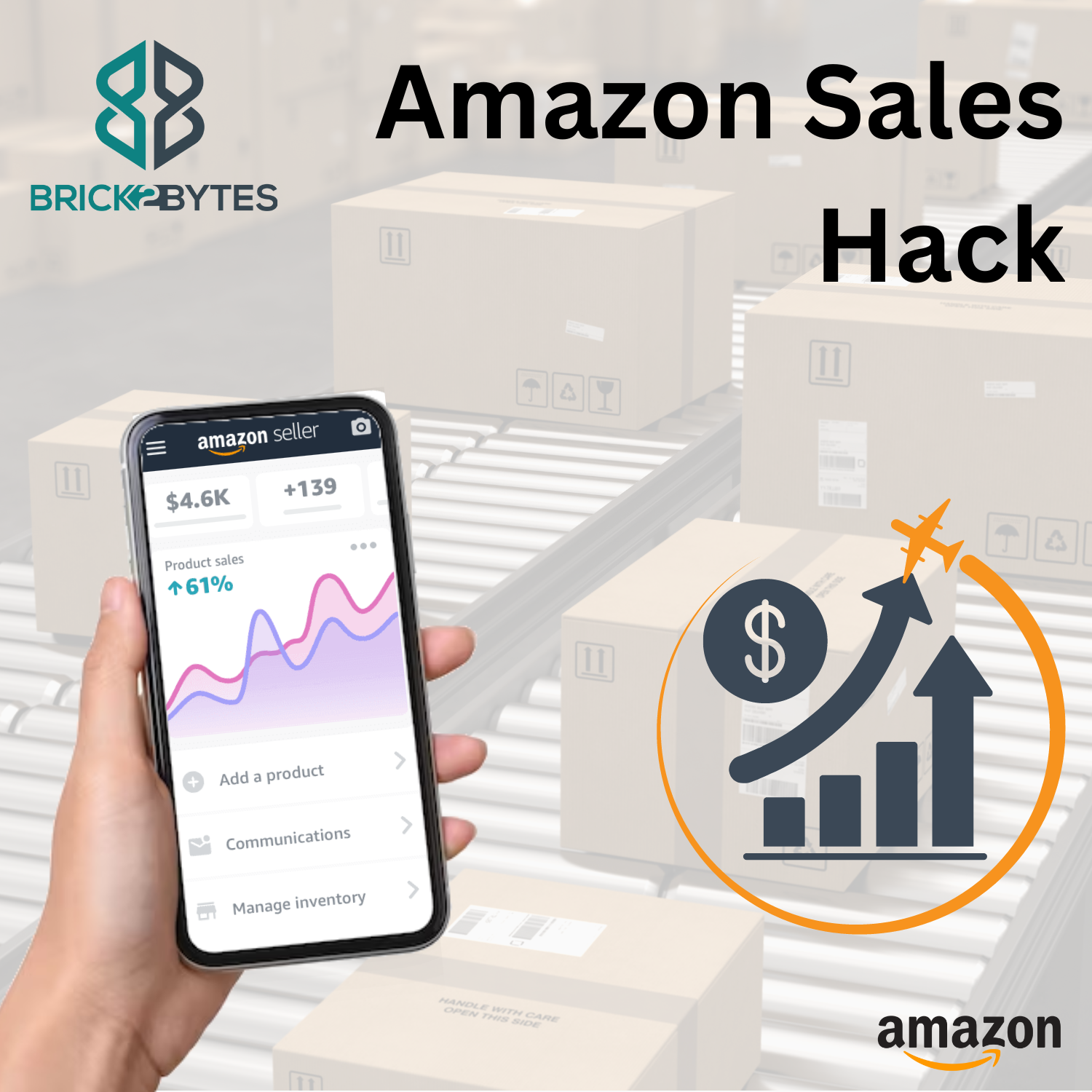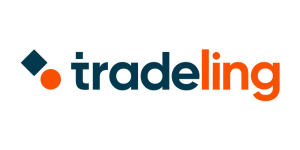In the vast world of e-commerce, few platforms hold the influence and potential that Amazon does. As the world’s largest online marketplace, Amazon provides sellers with an unparalleled opportunity to reach millions of customers worldwide. With its massive customer base, robust infrastructure, and sophisticated tools, it’s no wonder that many businesses, both large and small, have turned to Amazon selling to achieve their sales goals.
Whether you’re a seasoned entrepreneur or an aspiring Amazon seller taking your first steps, understanding the Amazon marketplace is crucial to unlocking its full potential. To truly maximize your sales on Amazon, it’s essential to adopt a strategic approach that encompasses everything from product selection and listing optimisation to advertising, fulfillment, and customer service.
In this comprehensive guide, we will walk you through every step of the process, providing you with actionable insights, proven strategies, and the knowledge you need to thrive in the competitive Amazon landscape. By the end, you’ll be equipped with the tools and confidence to navigate the intricacies of Amazon selling and achieve lasting success on the platform.
So, let’s dive in and explore how you can leverage the power of the Amazon marketplace to take your business to new heights.
Absolutely! Let’s move on to the second section of your blog post, focusing on setting up an Amazon seller account:
1. Setting Up Your Amazon Seller Account: The Foundation for Success
Every successful journey on Amazon begins with a solid foundation: your seller account. This is the gateway to listing your products, managing your inventory, processing orders, and interacting with customers. Choosing the right type of account and understanding its features is crucial to setting yourself up for success.
Choosing the Right Seller Account Type
Amazon offers two main types of seller accounts: Individual and Professional. The best choice for you will depend on your sales volume and business goals:
- Individual Seller Account: Best suited for sellers who plan to sell fewer than 40 items per month. This account type has no monthly subscription fee but incurs a per-item fee for each sale.
- Professional Seller Account: Ideal for sellers who anticipate selling more than 40 items per month. This account type comes with a monthly subscription fee (currently $39.99 in the US) but offers additional features like access to Amazon’s advertising platform, inventory management tools, and the ability to set your own shipping rates.
According to Jungle Scout’s 2023 State of the Amazon Seller report, 59% of Amazon sellers have a Professional account, highlighting its popularity among high-volume sellers.
Navigating Amazon Seller Central
Once you’ve chosen your account type, it’s time to familiarize yourself with Amazon Seller Central – your command centre for managing your Amazon business. Here, you can create and manage product listings, track your sales performance, communicate with customers, and access a wide range of tools and resources.
Seller Central can initially seem overwhelming, but with time and practice, you’ll discover its many powerful features that can help you optimize your operations and drive more sales.
Understanding Amazon’s Fees and Pricing Structure
Before you start selling on Amazon, it’s essential to have a clear understanding of the platform’s fees and pricing structure. These fees can vary depending on your product category, fulfilment method (FBA or FBM), and other factors.
Amazon’s fees typically include:
- Referral fees: A percentage of each sale, typically 8% to 15%, depending on the product category.
- Closing fees: A per-item fee for media items like books, DVDs, and music.
- FBA fees: (If you’re using FBA) Fees for storage, order fulfilment, and customer service.
- Subscription fee: (For Professional sellers) A monthly cost of $39.99 in the US.
Be sure to carefully review Amazon’s fee schedule and factor these costs into your pricing strategy to ensure profitability.
2. Product Research and Selection: Finding Your Winning Niche
The foundation of a successful Amazon business lies in choosing the right products to sell. Thorough product research is essential to identify profitable opportunities and avoid costly mistakes. It’s not just about finding products you’re passionate about; it’s about finding products that have high demand, low competition, and healthy profit margins.
Identifying Profitable Product Categories and Niches
Start by exploring broad product categories that align with your interests and expertise. Then, narrow down your focus to specific niches within those categories. Look for niches with a balance of demand and competition. A niche with high demand but also high competition might be difficult to break into, while a niche with low competition but also low demand might not generate enough sales.
According to Jungle Scout, some of the most popular product categories on Amazon include Home & Kitchen, Beauty & Personal Care, Sports & Outdoors, and Electronics. However, don’t limit yourself to these categories. Explore different options and find a niche that resonates with you.
Using Keyword Research Tools
Keyword research is a critical component of product research. It helps you understand what customers are searching for on Amazon and how much demand there is for specific products. Several powerful keyword research tools are available to Amazon sellers, including:
- Jungle Scout: Offers a comprehensive suite of tools for product research, keyword tracking, and competitor analysis.
- Helium 10: Provides a variety of tools for keyword research, listing optimization, and inventory management.
- Viral Launch: Helps you discover trending products, validate product ideas, and optimize your listings.
These tools can provide valuable insights into search volume, competition levels, and estimated sales potential for different keywords and products.
Analyzing Competitor Listings and Sales Data
Once you’ve identified potential products, it’s crucial to analyze your competition. Look at their product listings, pricing strategies, and customer reviews. This will give you a better understanding of what works and what doesn’t in your niche.
Pay attention to the following:
- Pricing: How are your competitors pricing their products? Is there room for you to compete on price?
- Listings: How well are their listings optimized? Are there areas where you can improve?
- Reviews: What are customers saying about their products? Are there any common complaints or issues you can address?
By analyzing your competition, you can identify opportunities to differentiate your products and create a unique value proposition for your customers.
3. Crafting a Compelling Amazon Product Listing: Attract and Convert
Your product listing is your virtual storefront on Amazon. It’s the first impression potential customers have of your product, and it plays a crucial role in their decision to purchase. A well-crafted listing not only attracts attention but also converts browsers into buyers.
Optimizing Product Titles with Relevant Keywords
Your product title is one of the most important elements of your listing. It’s what appears in search results and is often the first thing customers see. A well-optimized title should include relevant keywords that accurately describe your product and match customer search terms.
According to a study by Salsify, 82% of shoppers use search to find products online, making keyword optimization essential for visibility. Incorporate your focus keywords – Amazon seller, Amazon marketplace, and Amazon selling – where relevant, along with other high-volume search terms related to your product.
Writing Persuasive Product Descriptions that Highlight Benefits
Your product description is your opportunity to tell your product’s story. Don’t just list features; focus on the benefits your product offers to customers. Use clear, concise language and highlight how your product solves a problem or improves their lives.
A study by Nielsen Norman Group found that users typically read only 20% of the text on a web page. Therefore, make sure your most important information is at the beginning of your description.
Using High-Quality Product Images that Showcase Your Product
Images are a powerful tool for showcasing your product and making it more appealing to customers. Use high-resolution images that clearly show your product from different angles. Consider using lifestyle images that show your product in use to help customers visualize how it fits into their lives.
Amazon recommends using images that are at least 1000 pixels wide and 500 pixels tall. This ensures that your images will look great on both desktop and mobile devices.
Utilizing Amazon’s A+ Content (formerly Enhanced Brand Content)
If you’re a brand-registered seller, you can take advantage of Amazon’s A+ Content feature. This allows you to create visually rich product descriptions with enhanced images, comparison charts, and additional text. A+ Content can help you tell a more compelling brand story and increase conversions.
A study by Amazon found that A+ Content can increase sales by an average of 3-10%.
4. Pricing Strategies: Striking the Right Balance
Setting the right price for your products is a critical factor in maximizing sales on Amazon. Your pricing strategy should not only cover your costs and generate profit but also attract customers and remain competitive in the marketplace.
Different Pricing Models: Competitive, Value-Based, Premium
There are several pricing models you can consider:
- Competitive Pricing: This involves setting your prices in line with or slightly below your competitors. It’s a good strategy if you’re selling commodity products where price is a major factor in customer decision-making.
- Value-Based Pricing: This involves setting your prices based on the perceived value of your product. If your product offers unique features or benefits, you can charge a premium price.
- Premium Pricing: This involves setting your prices higher than your competitors to create an image of exclusivity and quality. This strategy can work well for luxury or high-end products.
The best pricing model for you will depend on your product, target audience, and brand positioning.
Using Amazon’s Dynamic Pricing Tools
Amazon offers dynamic pricing tools that allow you to automatically adjust your prices based on market conditions, competitor prices, and other factors. This can help you stay competitive and maximize your sales.
However, it’s important to use these tools carefully and monitor your prices regularly to ensure they align with your overall pricing strategy.
Monitoring Competitor Prices and Adjusting Accordingly
Keep a close eye on your competitors’ prices and adjust your own prices accordingly. You can use tools like Amazon’s Automate Pricing or third-party repricing software to automate this process.
Remember, pricing is not a one-time decision. It’s an ongoing process that requires constant monitoring and adjustment to stay ahead of the competition.
5. Amazon Advertising: Amplify Your Visibility
In the vast and competitive Amazon marketplace, getting your products noticed can be a challenge. That’s where Amazon advertising comes in. With its suite of powerful advertising tools, Amazon provides sellers with the opportunity to boost their visibility, reach a wider audience, and drive more sales.
Understanding Amazon’s Advertising Options
Amazon offers several advertising options to suit different needs and budgets:
- Sponsored Products: These are pay-per-click (PPC) ads that appear in search results and on product detail pages. They are a great way to increase visibility for specific products and drive traffic to your listings.
- Sponsored Brands: These ads appear at the top of search results and showcase your brand logo, a custom headline, and multiple products. They are ideal for building brand awareness and driving traffic to your brand store or a custom landing page.
- Sponsored Display: These ads appear on and off Amazon, targeting shoppers based on their browsing and buying behavior. They can help you reach new customers and re-engage with shoppers who have previously viewed your products.
According to Amazon, brands using Sponsored Products see an average of 133% increase in sales, making it a valuable tool for boosting your bottom line.
Setting Up and Managing Advertising Campaigns Effectively
Creating effective advertising campaigns on Amazon requires careful planning and execution. Here are some key steps to consider:
- Define your goals: What do you want to achieve with your advertising campaign? Are you looking to increase brand awareness, drive sales for a specific product, or both?
- Choose the right keywords: Use relevant keywords that match customer search terms to ensure your ads are shown to the right audience.
- Set a budget: Determine how much you’re willing to spend on your advertising campaign and allocate your budget across different campaigns and keywords.
- Monitor and optimize: Track your campaign performance regularly and make adjustments as needed. Optimize your bids, keywords, and targeting to improve your results.
Tracking Advertising Performance and Optimizing for ROI
Amazon provides robust reporting tools that allow you to track your advertising performance and measure your return on investment (ROI). Pay attention to key metrics like impressions, clicks, click-through rate (CTR), conversion rate, and advertising cost of sale (ACoS).
By analyzing these metrics, you can identify which campaigns and keywords are performing well and which ones need improvement. You can then optimize your campaigns to maximize your ROI and achieve your advertising goals.
Real-Life Example: The Success of a Sponsored Products Campaign
Consider a seller who launched a Sponsored Products campaign for their new line of organic skincare products. By targeting relevant keywords and optimizing their bids, they were able to increase their product visibility and drive significant traffic to their listings. This resulted in a substantial increase in sales and helped them establish their brand in a competitive market.
6. Fulfilling Orders: Efficient and Reliable Delivery
Efficient order fulfillment is the backbone of any successful Amazon business. It’s not just about getting products to customers; it’s about ensuring timely, reliable, and cost-effective delivery that leaves a positive impression and encourages repeat purchases.
Choosing Between Fulfillment by Amazon (FBA) and Fulfillment by Merchant (FBM)
Amazon offers two primary fulfillment methods:
- Fulfillment by Amazon (FBA): With FBA, you send your products to Amazon’s fulfillment centers, and they handle storage, packing, shipping, customer service, and returns. This option is popular for its convenience and eligibility for Prime shipping, which can attract more buyers.
- Fulfillment by Merchant (FBM): With FBM, you store and ship products yourself. This option gives you more control over the fulfillment process but requires more logistical effort.
The best choice for you will depend on your business size, resources, and product types. According to a survey by Jungle Scout, 66% of Amazon sellers use FBA, highlighting its popularity among sellers who prioritize convenience and Prime eligibility.
Optimizing Inventory Management and Storage
Whether you choose FBA or FBM, effective inventory management is crucial. It involves forecasting demand, tracking stock levels, and ensuring you have enough inventory to meet customer orders without overstocking.
For FBA sellers, Amazon provides tools like Inventory Performance Index (IPI) and Inventory Age to help you optimize your inventory levels and avoid storage fees. FBM sellers can use inventory management software to track their stock and streamline their fulfillment process.
Ensuring Fast and Reliable Shipping to Customers
Fast and reliable shipping is essential for customer satisfaction. Amazon Prime members expect their orders to arrive within two days, so if you’re using FBM, you’ll need to offer expedited shipping options to compete.
Consider using a shipping software or partnering with a third-party logistics (3PL) provider to streamline your shipping process and ensure timely delivery.
7. Customer Service: Building Trust and Loyalty
In the world of Amazon selling, exceptional customer service is not just a nice-to-have; it’s a must-have. It’s the key to building trust, fostering loyalty, and ultimately driving repeat business. Positive customer experiences can lead to glowing reviews, increased sales, and a strong brand reputation.
Responding Promptly to Customer Inquiries and Feedback
Customers expect quick and helpful responses to their questions and concerns. Make it a priority to respond to customer inquiries promptly, ideally within 24 hours. Use clear and concise language, and always maintain a professional and courteous tone.
According to a study by Zendesk, 90% of customers rate an “immediate” response as important or very important when they have a customer service question.
Handling Returns and Refunds Professionally
Returns and refunds are a part of doing business on Amazon. Handle them professionally and efficiently to ensure customer satisfaction. Have a clear return policy in place and communicate it clearly to your customers. When processing returns, be prompt and courteous, and strive to resolve any issues quickly.
A study by Narvar found that 96% of consumers would shop with a retailer again based on an “easy” or “very easy” return experience.
Going Above and Beyond to Exceed Customer Expectations
Don’t just meet customer expectations; exceed them. Look for opportunities to go the extra mile, such as offering personalized recommendations, sending handwritten thank-you notes, or providing surprise discounts. These small gestures can make a big difference in customer satisfaction and loyalty.
A study by Salesforce found that 84% of customers say being treated like a person, not a number, is very important to winning their business.
9. Analyzing and Optimizing: Continuous Improvement
To truly maximize your sales on Amazon, it’s essential to adopt a data-driven approach. Analyzing your performance metrics and making continuous improvements is key to staying competitive and adapting to the ever-changing marketplace.
Using Amazon’s Brand Analytics and Other Reporting Tools
Amazon provides a wealth of data and insights through its Brand Analytics dashboard and other reporting tools. These tools allow you to track key performance indicators (KPIs) such as sales, traffic, conversion rates, and customer demographics. By analyzing this data, you can identify trends, pinpoint areas for improvement, and make informed decisions about your product listings, pricing, and advertising strategies.
Tracking Key Performance Indicators (KPIs)
Some of the most important KPIs to track include:
- Sales: Monitor your daily, weekly, and monthly sales to identify trends and seasonality.
- Sessions: Track the number of visits to your product listings to gauge interest and visibility.
- Conversion Rate: Measure the percentage of sessions that result in a sale to assess the effectiveness of your listings.
- Advertising Cost of Sale (ACoS): Calculate the ratio of your advertising spend to your advertising revenue to evaluate the profitability of your campaigns.
- Customer Reviews: Monitor your customer feedback to identify areas where you can improve your products or customer service.
Making Data-Driven Decisions to Optimize Your Strategy
Use the insights gained from your data analysis to make informed decisions about your Amazon business. For example, if you notice that a particular product is underperforming, you might consider adjusting its price, optimizing its listing, or running a targeted advertising campaign.
Remember, continuous improvement is an ongoing process. Regularly review your data, experiment with different strategies, and adapt to the changing market conditions to stay ahead of the competition.
Conclusion
Maximizing sales on Amazon is a journey that requires a combination of strategic planning, meticulous execution, and continuous optimization. By understanding the intricacies of the Amazon marketplace, setting up a solid foundation with your seller account, conducting thorough product research, crafting compelling product listings, implementing effective pricing and advertising strategies, ensuring efficient order fulfillment, and prioritizing exceptional customer service, you can position yourself for success in this dynamic and competitive environment.
Remember, the Amazon marketplace is constantly evolving. Stay informed about the latest trends, algorithm updates, and competitor strategies. Continuously analyze your performance data, experiment with new approaches, and adapt to the changing landscape. By staying ahead of the curve and embracing a data-driven approach, you can ensure the long-term growth and profitability of your Amazon business.
Whether you’re an aspiring Amazon seller or a seasoned veteran, the opportunities for success on this platform are immense. By following the strategies and insights outlined in this guide, you can unlock the full potential of the Amazon marketplace and achieve your sales goals.
Now it’s your turn to take action. Start implementing these strategies today and watch your Amazon business thrive. Remember, success on Amazon is not just about selling products; it’s about building a brand, fostering customer loyalty, and creating a sustainable business that can stand the test of time.









[…] Amazon.ae: The UAE arm of the global e-commerce titan has made significant strides in the region by localizing its offerings to cater to the unique needs and preferences of UAE consumers. […]
An effective SEO company for promoting your website, professional help in the field of SEO.
How to make the right choice of an SEO agency, tips from experts.
Advantages of working with experienced SEO specialists, what results you can achieve.
Assessment of market leaders in SEO services, customers’ experience.
Why an SEO company is necessary for your business, main advantages.
ecommerce seo pricing http://www.seorg-seo.com/ .
Car rental for convenience and freedom of movement, wide range of services.
Cover letter generator with LinkedIn profile integration
cover letter generate createcoverletterfree.com .